#software development life cycle [SDLC]
Explore tagged Tumblr posts
Text
Mastering the Software Development Life Cycle: A Guide for Aspiring Professionals.
It all starts with understanding the Software Development Life Cycle (SDLC).
Our SDLC certification course is designed to help you gain a deep understanding of each stage in the development process—planning, designing, building, testing, and deploying software.
This certification not only boosts your knowledge but also proves to employers that you're serious about quality, efficiency, and success in software projects.

0 notes
Text
0 notes
Text
What is the role of GenAI in the Software Development Life Cycle(SDLC)?
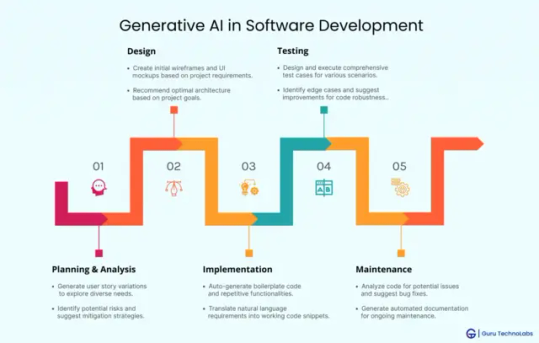
The Software Development Life Cycle (SDLC) is a structured process used by software developers to design, develop, test, and deploy software applications. The SDLC typically comprises several stages: requirement analysis, system design, development, testing, deployment, and maintenance. Each phase plays a crucial role in ensuring the software meets the desired quality standards and user requirements.
Adding GenAI to the SDLC has many advantages like improved efficiency, precision, and speed. GenAI can automate routine tasks, create new solutions, and offer predictive insights, changing the way software is created, tested, and managed. This helps organizations release top-notch software quicker and more affordably.
Get better understanding with Generative AI vs Traditional AI to help you get knowledge on the software development lifecycle.
Evolution of AI in Software Development
Generative AI refers to AI systems designed to generate new content or solutions by learning from existing data. In software development, GenAI can create code, design software architectures, generate test cases, and even simulate user interactions. These capabilities make GenAI a powerful tool for automating and enhancing various stages of the SDLC.
AI has evolved significantly in software development, starting from simple rule-based systems to advanced machine learning models. Initially, AI was used for automating basic tasks and providing decision support. With the advent of machine learning and neural networks, AI has become more sophisticated, enabling developers to leverage GenAI for complex tasks such as code generation, automated testing, and predictive maintenance.
Stages of SDLC and the Role of GenAI
Requirement Analysis
Benefits of Using GenAI for Requirement Gathering
GenAI can analyze vast amounts of data to identify user needs and requirements accurately. By processing user feedback, market trends, and historical data, GenAI can generate comprehensive requirement documents, reducing the time and effort required for manual analysis.
Example Use Cases
For instance, a GenAI system can analyze customer reviews and support tickets to identify common pain points and feature requests. This information can then be used to prioritize requirements and ensure the final product meets user expectations.
System Design
GenAI in Designing Software Architecture
Generative AI in Software Development can assist in designing software architecture by generating design patterns and suggesting optimal system structures. It can analyze existing architectures, identify potential improvements, and provide recommendations for designing scalable and efficient systems..
Tools and Techniques
Various tools, such as deep learning frameworks and design pattern generators, leverage GenAI to automate the system design process. These tools can create architectural diagrams, generate code templates, and suggest best practices for software design.
Development
How GenAI Automates Coding and Development Tasks
GenAI can automate coding tasks by generating code snippets, completing functions, and even creating entire modules based on high-level specifications. This accelerates the development process and ensures consistency and accuracy in the codebase.
Case Studies of GenAI in Action
Several companies have successfully implemented GenAI in their development workflows. For example, OpenAI's Codex can generate code in various programming languages based on natural language inputs, significantly reducing the time developers spend on writing boilerplate code.
Testing
Enhancing Software Testing with GenAI
Generative AI in SDLC enhances software testing by generating test cases, predicting potential bugs, and automating test execution. It can analyze code changes and suggest relevant test scenarios, ensuring comprehensive test coverage.
Automated Testing Tools Powered by GenAI
Tools like Testim and Applitools use GenAI to automate visual testing, regression testing, and end-to-end testing. These tools can identify UI discrepancies, detect functional issues, and ensure the software meets quality standards.
Deployment
Streamlining Deployment Processes with GenAI
Generative AI in Software Development streamlines deployment processes by automating configuration management, continuous integration, and continuous delivery. It can predict deployment risks, optimize resource allocation, and ensure seamless software releases.
Real-World Applications
Companies like Netflix use GenAI to manage their deployment pipelines. GenAI systems monitor deployment processes, identify potential issues, and automatically roll back changes if necessary, ensuring high availability and reliability.
Maintenance
GenAI in Software Maintenance and Updates
Generative AI in SDLC plays a crucial role in software maintenance by predicting issues before they occur, automating bug fixes, and suggesting updates. It can analyze system logs, user feedback, and performance metrics to identify areas for improvement.
Predictive Maintenance with AI
Predictive maintenance powered by GenAI helps organizations anticipate hardware failures, optimize system performance, and reduce downtime. By analyzing historical data and usage patterns, GenAI can provide actionable insights for proactive maintenance.
Benefits of Implementing GenAI in SDLC
Improved Efficiency and Productivity
GenAI automates repetitive tasks, allowing developers to focus on high-value activities. This leads to increased productivity and faster development cycles.
Enhanced Accuracy and Reduced Errors
By leveraging GenAI's predictive capabilities, developers can minimize errors and ensure higher accuracy in code and design. GenAI can detect potential issues early, reducing the risk of defects in the final product.
Cost Reduction
Automating various stages of the SDLC with GenAI reduces the need for manual intervention, leading to significant cost savings. Organizations can allocate resources more effectively and reduce development and maintenance costs.
Accelerated Time-to-Market
GenAI accelerates the software development process by automating tasks, generating code, and providing predictive insights. This enables organizations to bring products to market faster and respond to changing market demands more effectively.
Challenges and Considerations
Technical Challenges
Integrating Generative AI in SDLC requires technical expertise and a robust infrastructure. Organizations must address challenges related to data quality, model training, and system integration to fully leverage Generative AI's capabilities.
Ethical and Legal Considerations
The use of GenAI raises ethical and legal concerns, such as data privacy, algorithmic bias, and intellectual property rights. Organizations must establish clear guidelines and ensure compliance with relevant regulations to mitigate these risks.
Ensuring Security and Privacy
GenAI systems must be designed with security and privacy in mind. Protecting sensitive data, ensuring secure model training, and preventing unauthorized access are critical considerations for deploying GenAI in the SDLC.
Conclusion
Generative AI plays a transformative role in the Software Development Life Cycle, offering numerous benefits such as improved efficiency, accuracy, and cost reduction. By automating tasks, generating innovative solutions, and providing predictive insights, Generative AI enhances every stage of the SDLC, from requirement analysis to maintenance.
However, organizations must address technical, ethical, and security challenges to fully realize the potential of Generative AI in software development. As the technology continues to evolve, the integration of Generative AI in SDLC is set to become a standard practice, driving innovation and improving software quality across industries.
0 notes
Text
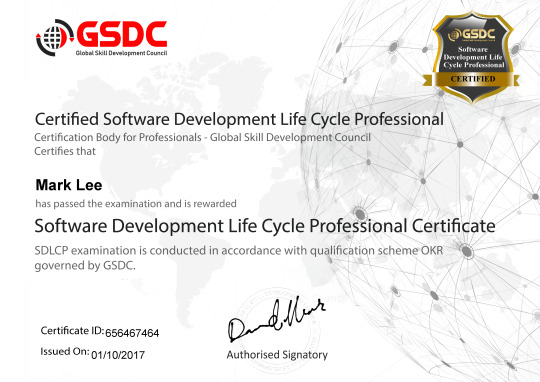
Software Development Life Cycle Certification is the systematic approach of Software development. It's a testimony to the individual’s expertise and proficiency in the SDLC. This certification will help you validate the knowledge you need to make your professional career in SDLC. You can significantly choose between different methods, tools, and artifacts; the goal of our certification is to authenticate the knowledge and skills to reduce project risks through planning so that software meets expectations.
This certification will cover different SDLC models along with their processes. With this, individuals can showcase their detailed knowledge of quality software, project management, and development processes. Our SDLC certification course not only enhances the career but also helps an individual to succeed in the competitive tech industry.
#sdlc certification#sdlc certification course#certified sdlc#software development life cycle certification#certification in software development life cycle
0 notes
Text
0 notes
Text
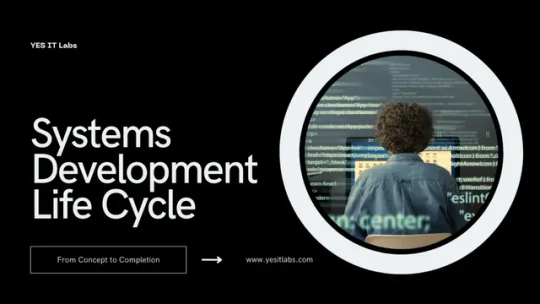
Discover the Systems Development Life Cycle (SDLC): From Concept to Completion
Explore the journey of the Systems Development Life Cycle from its inception to achieving project success. Acquire insights into the various stages, methodologies, and optimal approaches through this all-inclusive handbook.
#Systems Development Life Cycle (SDLC)#software systems#software applications#Software Development Company#Waterfall model#Agile methodologies
0 notes
Text
SDLC? Oh, it's the game plan behind every good software.
SDLC stands for Software Development Life Cycle, and it's basically the blueprint developers follow when building software. It breaks the whole thing down into clear steps so nobody’s lost in the sauce.
Here’s the usual flow: 👂 Requirement Gathering – What do users actually want? 🧠 Design – Map out how things should look and work. 💻 Development – Write the code, make the magic happen. 🧪 Testing – Find and squash the bugs. 🚀 Deployment – Send it out into the world. 🛠 Maintenance – Fix issues and keep it fresh.
It’s like building a house, but for software. No one skips to the roof first — you need that foundation.
Different projects might use different SDLC models (like Agile if you like working in sprints, or Waterfall if you’re all about that step-by-step life).
Wanna go deeper? Here’s a great breakdown: 👉 SDLC on PrepInsta
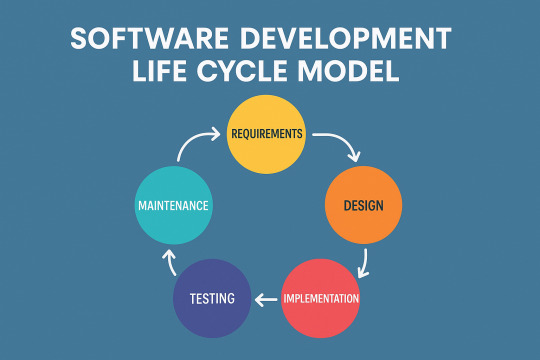
2 notes
·
View notes
Text
Software Development Life Cycle
The Software Development Life Cycle (SDLC) is a systematic process used to build software applications with quality and efficiency. It outlines a series of phases like planning, analysis, design, coding, testing, deployment, and maintenance that guide developers from an idea to a fully functional product. Each SDLC model offers a different approach to managing these phases, based on the project's complexity, goals, and flexibility needs. Understanding the available models helps teams choose the right path for smooth and effective software development.
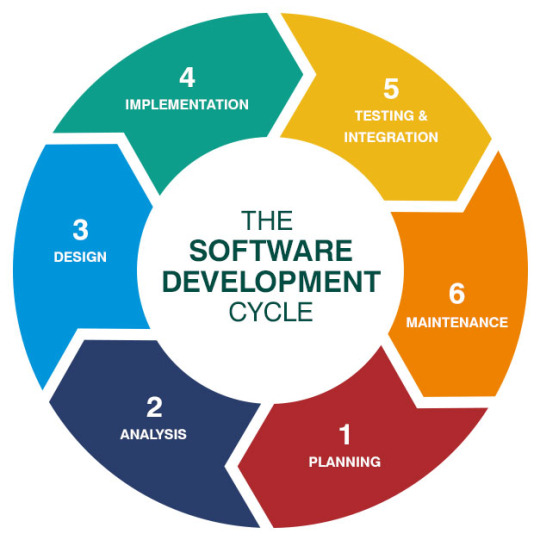
Key SDLC Models:
Waterfall Model: A simple and linear approach where each phase is completed before the next one starts. It works best when requirements are clear and fixed.
Agile Model: Focuses on flexibility and iterative progress. It allows constant feedback and adaptations throughout the development cycle.
Spiral Model: Combines elements of both design and prototyping with a focus on risk analysis. It's ideal for large, high-risk projects.
V-Model: An extension of the Waterfall model that emphasizes testing at every stage. Each development phase has a directly associated testing phase.
2 notes
·
View notes
Text
WEEK 2.
August 22, 2024
Today at school, we had a fun lesson about software design and engineering. Our instructor began by telling us what software engineering means and why user experience and functionality are important. Then, we talked about the software development life cycle (SDLC) and learned about its different stages like planning, analysis, design, implementation, etc.
After our lesson, we had a fun group activity. We were split into four teams and given a project called iLearn: a digital learning environment. In this project, we worked together to look at different parts of the iLearn system. First, we learned about the company background, discovering that iLearn was made to help students aged 4 to 18 in schools. Then, we discussed the goals of the iLearn system and its services. We also talked about the challenges they faced while creating the system, the software principles they used, and finally, we wrapped up with conclusions. Overall, it was a fun and educational day, and we are excited to continue learning about software design in the future!
4 notes
·
View notes
Text
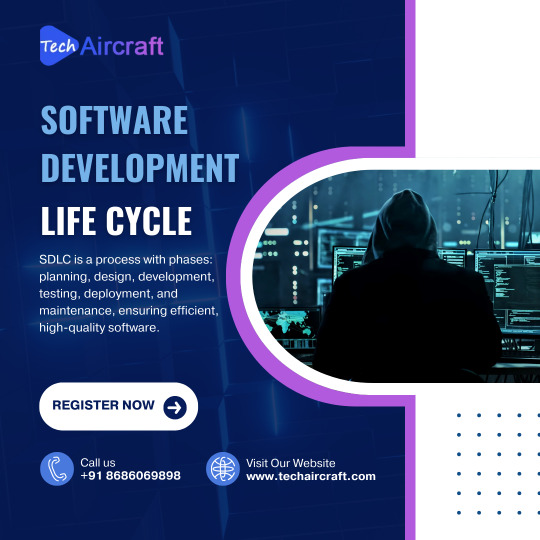
The Software Development Life Cycle (SDLC) is a structured process that ensures the successful creation, deployment, and maintenance of high-quality software. At TechAircraft, we follow a meticulous approach to SDLC, from initial planning to the final release, ensuring that each phase is handled with precision and expertise.
We begin with a thorough requirement analysis, followed by designing the architecture, coding, and testing to ensure robust functionality. Post-launch, we focus on deployment and ongoing maintenance to keep the software updated and optimized.
By adopting industry best practices and agile methodologies, TechAircraft guarantees that every software solution we build is scalable, secure, and aligned with your business goals. Our dedicated team works collaboratively at each stage of the SDLC to ensure maximum efficiency, quality, and customer satisfaction.
Transform your business with seamless software development. Let TechAircraft guide your journey from concept to completion.
SoftwareDevelopment #SDLC #TechAircraft #Agile #Coding #TechSolutions #Innovation #SoftwareEngineering #ITServices #BusinessGrowth #QualitySoftware #TechExperts #DigitalTransformation
2 notes
·
View notes
Text
082224 | CPE312 Software Design and Engineering | 12:00 - 3:00 PM
WEEK 2: Diving Deeper into Software Design and Engineering
Earlier, we really got into the the bottom line of what engineering is all about. One of the key takeaways was understanding that software engineering is both an art and a science which is a beautiful blend that requires creativity and logic.
We look into the emergence of software engineering and the evolution of techniques over time. It was fascinating to see how outdated programmers used the "build and fix" method, and how those early techniques have evolved into the highly developed processes we use today. We also dig into the Software Development Life Cycle (SDLC) and the waterfall model, laying a solid foundation for what's to come.
The highlight of today's session was a 30 minutes case study challenge Engr. Carl gave us. We got the "Galaxy Mining Company LTD" and we need to analyze the company's background, objectives of the system, services offered by the system, challenges faced, software engineering principles applied and the conclusion. We had just 30 minutes to analyze the case, to prepare a PPT, and 5 minutes to report it. It was intense but incredibly fun!
Overall, the discussions were interactive and full of energy. We all laughed, shared some sweet smiles, and truly enjoyed the collaborative spirit of the class.
As we continue this journey, I’m reminded of a quote: "Alone we can do so little; together we can do so much." by Helen Keller. It's teamwork that makes the dream work, and today proved that we’re all in this together!
#CPE #SDE










3 notes
·
View notes
Text
Added Another 5,000 Words to Demo & Work Philosophy For IF
Desiderium is now at least 15,000 words!
I added about 5,000 more words to the demo (maybe a little less). I'm trying to update it daily. I had a lot of fun today playing around with how each RO will interact with each other in a particular instance (asking if the RO the user has chosen to pair up with for a scouting mission has ever been in love). Still have to write the pairings for the user-created character, though. That will involve more choices compared to the scenes with pre-made characters, though.
A lot of this is just a rough draft and while the core concepts will stay, I definitely plan to go back and add flavor text, more descriptions (not tooooo much though), reword things, and just overall make things better.
As for work philosophy, I'm a BSA (business systems analyst) in my professional life and have a background in software development and the SDLC (software development life cycle). I'm planning on completing this book/game the way I would manage a project for my software team.
I plan to put at least several hours of work in a day and am using a Kanban methodology to keep track of everything. While I haven't really coded much since college, I am familiar with choicescript and it's honestly kind of a breeze compared to C, MIPS, Java, etc.
Keeping track of software development is kind of my thing so I'm anticipating that I will be able to stick with my milestones and overcome risks as they pass by.
Additionally, I have created an internal documentation stack on Confluence that has a bunch of lore for the world in my story and I can't wait to share (the non-spoilery) parts of it with everyone. Stay tuned!
Also, currently I'm using CSIDE as my IDE but I've heard that visual studio might have a choicescript plugin and honestly that might make it easier to push updates via git so I'll be looking into that, too.
#interactive fiction#books#my writing#reading#update#choicescript#hosted games#desiderium if#writing
3 notes
·
View notes
Text
Software Devolopment
Software Development Is An Iterative Logical Process That Aims To Create A Computer Coded Or Programmed Software To Address A Unique Business Or Personal Objective, Goal Or Process. Software Development Is Generally A Planned Initiative That Consists Of Various Steps Or Stages That Result In The Creation Of Operational Software.
Software Development Is Primarily Achieved Through Computer Programming, Which Is Carried Out By A Software Programmer And Includes Processes Such As Initial Research, Data Flow Design, Process Flow Design, Flow Charts, Technical Documentation, Software Testing, Debugging And Other Software Architecture Techniques. This Is Known As The Software Development Life Cycle (SDLC).
2 notes
·
View notes
Photo
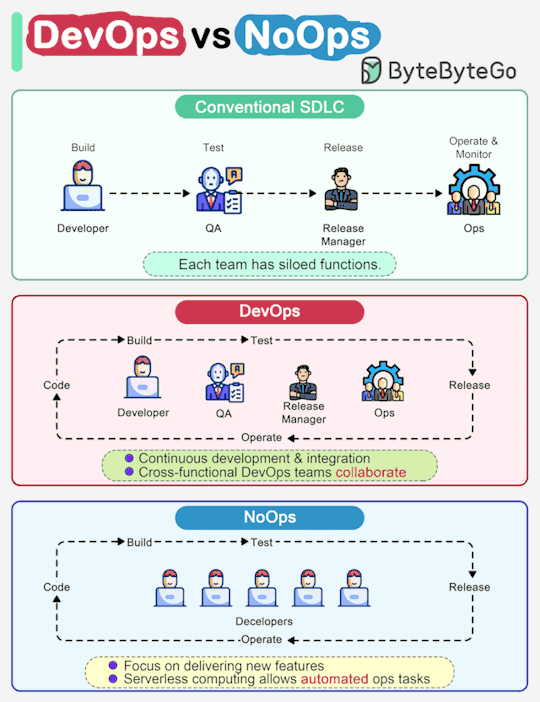
ByteByteGo nails another "a picture is worth a thousand words" infographic. This one highlights some key differences between traditional SDLC, DevOps and emerging NoOps.
In a traditional software development, code, build, test, release and monitoring are siloed functions. Each stage works independently and hands over to the next stage.
DevOps, on the other hand, encourages continuous development and collaboration between developers and operations. This shortens the overall life cycle and provides continuous software delivery.
NoOps is a newer concept with the development of serverless computing. Since we can architect the system using FaaS (Function-as-a-Service) and BaaS (Backend-as-a-Service), the cloud service providers can take care of most operations tasks. The developers can focus on feature development and automate operations tasks.
NoOps is a pragmatic and effective methodology for startups or smaller-scale applications, which moves shortens the SDLC even more than DevOps.
(via EP90: How do SQL Joins Work? - ByteByteGo Newsletter)
5 notes
·
View notes
Text
#sdlc certification#sdlc certification course#certified sdlc#software development life cycle certification#certification in software development life cycle
0 notes
Text
Best certification course academy in mumbai
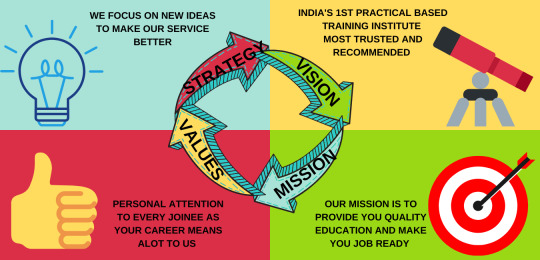
1.Upsurge Infotech - Practical knowledge is the key to success, and Upsurge Infotech, the best training institute in Mumbai, provides you with just that. With a team of experienced and certified professionals who have years of expertise in their respective fields, we offer comprehensive training programs in Software Testing, Digital Marketing, SAP ERP, Python, and other emerging technologies.
SoftwareTesting Courses in Mumbai
If you’re interested in learning about software testing courses in Mumbai then Upsurge Infotech has several courses and resources available that can help you develop your skills in this field. Software testing is a crucial process in the software development life cycle (SDLC) that involves evaluating a software application’s functionality, performance, and quality to identify any defects or errors. The goal of software testing is to ensure that the software meets the requirements, works as expected, and delivers a satisfactory user experience.
SAPCourses In Mumbai
If you’re interested in learning about SAP courses in Mumbai then Upsurge Infotech has several courses and resources available that can help you develop your skills in this field. SAP’s ERP software, known as SAP ERP, is one of their flagship products and provides comprehensive solutions for financial management, procurement, sales, production, and other core business functions. It enables businesses to consolidate their data, automate processes, and gain real-time insights into their operations.
DigitalMarketing Course in Mumbai
If you’re interested in learning Digital Marketing Course in Mumbai then Upsurge Infotech can help you develop your skills in this field. Digital marketing, in its most basic form, refers to any online marketing activities or properties. Email marketing, pay-per-click advertising, social media marketing, and even blogging are all examples of digital marketing that help people learn about your business and buy from you.
PythonCourse in Mumbai
If you’re interested in learning Python Course in Mumbai then Upsurge Infotech can help you develop your skills in this field. Python is a dynamically semantic, interpreted, object-oriented high-level programming language. Its high-level built-in data structures, together with dynamic typing and dynamic binding, making it ideal for Rapid Application Development and as a scripting or glue language for connecting existing components.
DataAnalyst Course in Mumbai
If you are searching for a Job that doesn’t require coding, then this digital analyst course in Mumbai is right for you. Upsurge Infotech offers a Data Analyst Training program it is the process of systematically applying statistical logical techniques to describe and illustrate, condense and recap, and evaluate data. To put it simply it’s a process in which an analyst Works with data to extract relevant information that may be used to guide decisions known as data analysis.
Mumbai Location: 2A-20, 3rd Floor, Viviana Building, inside Super Shopping Centre, near Khadi Gram Udyog, Swami Vivekananda Rd, next to T-10 showroom, Andheri West, Mumbai, Maharashtra 400058.
Thane Location: 602, 6th Floor, Ganesh Tower, Opp Thane West Platform #1, Dada Patil Wadi, Thane (W) - 400602.
2.LearnCoz - LearnCoz is a reputed computer institute located at 512, 2, Kalyan - Bhiwandi Road, Sapna Industrial Estate, Saravali, Mumbai. Our institute offers a wide range of computer courses to help individuals enhance their skills and stay competitive in the ever-evolving IT industry. Join us and unleash your potential in the world of computers.
3.DatapointComputer - Datapoint Computer is a renowned computer training institute based in Mulund West, Mumbai. Situated at 52 Saidham Arcade, P K Road, we offer high-quality computer training courses to help students acquire the skills needed to thrive in the IT industry. Join us and unlock your potential in the world of computers.
4.Wiztech - Wiztech is a leading institute providing software training with 100% placement assistance. Located at 4B/29, Phoenix Paragon Plaza, LBS Marg, Kurla West, Mumbai, we offer comprehensive courses that cover various software technologies. Upgrade your skills and secure a promising career in the IT sector with Wiztech.
5.VDMA - VDMA offers comprehensive courses in Digital Marketing, SEO, PPC, Wordpress, and Social Media. Located at Taximens Colony, 2B, 64, 6th Floor, LBS Marg, Kurla West, Mumbai, our institute equips students with the necessary skills to thrive in the digital world. Upgrade your digital marketing skills and unlock exciting career opportunities.
6.DGmarkInstitute - DGmark Institute is a highly acclaimed Digital Marketing Training Institute situated at 23, Ground Floor, Harmony Mall, New Link Road, Sejal Park, Colony No 1, Bhagat Singh II, Goregaon West, Mumbai. We provide top-notch training in digital marketing, equipping students with the knowledge and skills needed to excel in the digital era.
7.LIPSINDIA - LIPSINDIA is a premium destination for Digital Marketing Training in Mumbai. Located at 3/A Vrindhavan Bldg, Gr Floor, Behind Pantaloons, Umeda Ashram Road, Borivali West, Mumbai, we offer comprehensive courses that cover various aspects of digital marketing. Enhance your knowledge, upgrade your skills, and stay ahead in the competitive digital landscape.
8.ExcelRSolutions - ExcelR Solutions is your gateway to mastering Business Analyst Course. Located at 304, 3rd Floor, Pratibha Building, Three Petrol Pump, Opposite Manas Tower, Lal Bahadur Shastri Road, Pakhdi, Mumbai, our institute provides comprehensive training that is adaptable to everyone. Enhance your business analysis skills and open doors to new career possibilities.
9.Livewire - Livewire is a renowned IT institute located at 2B,22, Vivina, Apartment, Nadco Shopping Centre, Opposite Andheri Railway Station, S.V.Road, Andheri West, Mumbai. Our institute offers a wide range of courses, including web designing and IT-related disciplines. Upgrade your skills and unlock exciting career opportunities in the IT industry.
10.ChaloDigitalMarketingInstitute - Chalodigital Marketing Institute is your ultimate destination to learn awesome social media hacks and digital marketing strategies. Located at Raghuleela Mall Office No 310, First Floor, Behind Poisar Bus Depot, Boraspada Road, Jai Bhim Sanjay Nagar, Kandivali, Mumbai, our institute provides expert training in digital marketing to help individuals excel in the digital landscape.
2 notes
·
View notes